GitHub GitHub Actions GitHub Actions Certificate Exam Online Training
GitHub GitHub Actions Online Training
The questions for GitHub Actions were last updated at Dec 20,2025.
- Exam Code: GitHub Actions
- Exam Name: GitHub Actions Certificate Exam
- Certification Provider: GitHub
- Latest update: Dec 20,2025
As a developer, you want to run a workflow from the Actions tab in GitHub.
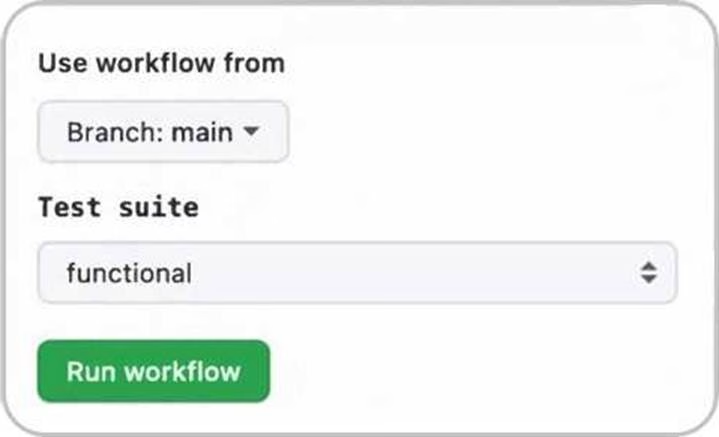
Which YAML snippet should you use to match the interface in this image?
A)
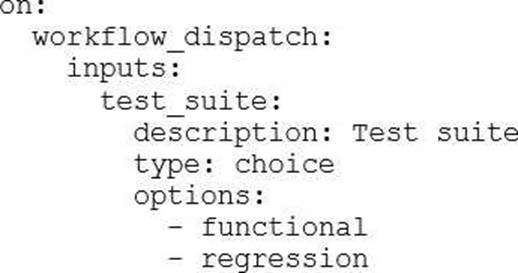
B)
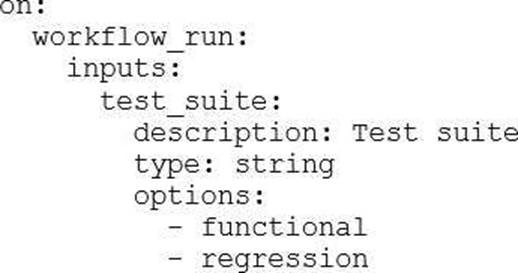
C)
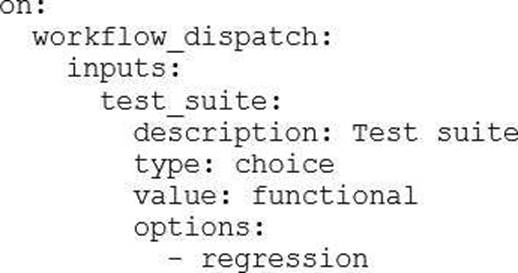
D)
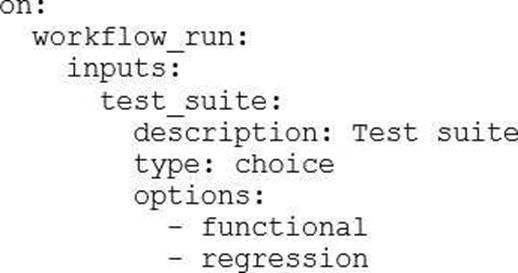
- A . Option A
- B . Option B
- C . Option C
- D . Option D
How many jobs will result from the following matrix configuration?
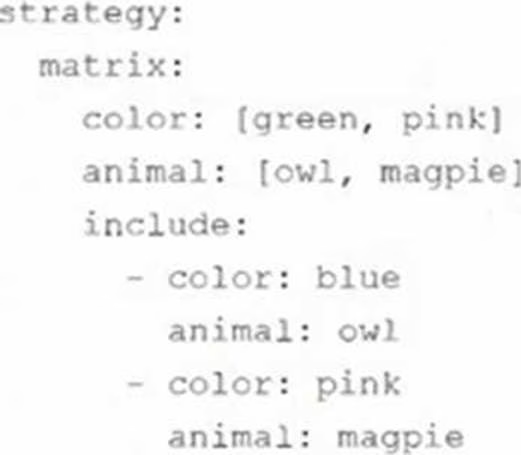
- A . 3 jobs
- B . 4 jobs
- C . 5 jobs
- D . 6 jobs
As a developer, which workflow steps should you perform to publish an image to the GitHub Container Registry? (Choose three.)
- A . Use the actions/setup-docker action
- B . Authenticate to the GitHub Container Registry.
- C . Build the container image.
- D . Push the image to the GitHub Container Registry
- E . Pull the image from the GitHub Container Registry.
As a developer, you have a 10-MB data set that is required in a specific workflow.
Which steps should you perform so the dataset is stored encrypted and can be decrypted during the workflow? (Choose three.)
- A . Encrypt the dataset.
- B . Leverage the actions/download-secret action in the workflow.
- C . Store the dataset in a GitHub encrypted secret.
- D . Store the encryption keys in a GitHub encrypted secret.
- E . Compress the dataset
- F . Commit the encrypted dataset to the same repository as the workflow
- G . Create a GitHub encrypted secret with the Large object option selected and upload the dataset.
Which statement is true about using default environment variables?
- A . The environment variables can be read in workflows using the ENV: variable_name syntax.
- B . The environment variables created should be prefixed with GITHUB_ to ensure they can be accessed in workflows
- C . The environment variables can be set in the defaults: sections of the workflow
- D . The GITHUB_WORKSPACE environment variable should be used to access files from within the runner.
Which of the following commands will set the $FOO environment variable within a script, so that it may be used in subsequent workflow job steps?
- A . run: echo "::set-env name=FOO::bar"
- B . run: echo "FOO=bar" >> $GITHUB_ENV
- C . run: echo ${{ $FOO=bar }}
- D . run: export FOO=bar
You are reaching your organization’s storage limit for GitHub artifacts and packages.
What should you do to prevent the storage limit from being reached?
- A . via the .github repository owned by the organization
- B . via repositories owned by the organization
- C . via the GitHub Marketplace
- D . via a repository owned by a third party
Based on the YAML below, which two statements are correct? (Choose two.)
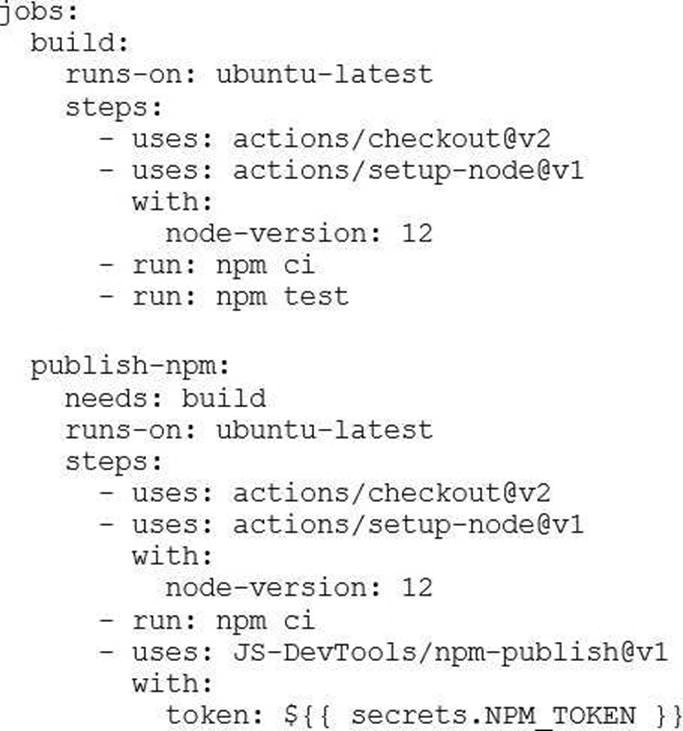
- A . This workflow will publish a package to an npm registry.
- B . This workflow will publish a package to GitHub Packages.
- C . This workflow file is using a matrix strategy.
- D . The workflow job publish-npm will only run after the build job passes.
In which scenarios could the GITHUB_TOKEN be used? (Choose two.)
- A . to leverage a self-hosted runner
- B . to create a repository secret
- C . to publish to GitHub Packages
- D . to create issues in the repo
- E . to read from the file system on the runner
- F . to add a member to an organization
As a developer, you need to use GitHub Actions to deploy a microservice that requires runtime access to a secure token. This token is used by a variety of other microservices managed by different teams in different repos.
To minimize management overhead and ensure the token is secure, which mechanisms should you use to store and access the token? (Choose two.)
- A . Store the token in a configuration file in a private repository. Use GitHub Actions to deploy the configuration file to the runtime environment.
- B . Store the token as a GitHub encrypted secret in the same repo as the code. Create a reusable custom GitHub Action to access the token by the microservice at runtime.
- C . Use a corporate non-GitHub secret store (e.g., HashiCorp Vault) to store the token. During deployment, use GitHub Actions to store the secret in an environment variable that can be accessed at runtime.
- D . Store the token as a GitHub encrypted secret in the same repo as the code. During deployment, use GitHub Actions to store the secret in an environment variable that can be accessed at runtime.
- E . Store the token as an organizational-level encrypted secret in GitHub. During deployment, use GitHub Actions to store the secret in an environment variable that can be accessed at runtime.
Latest GitHub Actions Dumps Valid Version with 72 Q&As
Latest And Valid Q&A | Instant Download | Once Fail, Full Refund

